Browse Houses
Search Results: Returned 5516 records. Displaying results 5301 – 5400
| House name | Description | |
|---|---|---|
| Ummera | Robert Travers was leasing this property to Samuel McCaul at the time of Griffith's Valuation, when it was valued at £14. Lewis refers to it as the seat of Rev. B. Swete in 1837. In 1814 Leet notes Ummery as the seat of Rev. A. Sealy. Ummera House is still extant. |

|
| Underhill Cottage | Held from Benjamin H. Holmes by William Hayle in 1851 when it was valued at £13. Now demolished. | |
| Union | In 1906 Col. E.H Cooper's estate owned a property at Union, barony of Tirerrill, valued at £7. This may the gamekeeper's cottage which is still extant at this location. |

|
| Union Lodge | This house was the residence of the Reverend William Gifford in 1837. At the time of Griffith's Valuation Hughes Martin was the occupier. He held the property from William Coppinger and the buildings were valued at £21. | |
| Unionhall House | Colonel W.S. French was leasing a property valued at £28 to John Limerick, at the time of Griffith's Valuation. It was the residence of Col. W.Limerick in 1814. According to Townsend, Colonel Limerick had erected this "large and commodious dwelling" on his return from many years service with the East India Company. Union Hall is still extant and occupied. |

|
| Upland | William Spiller was leasing this property from Benjamin Gillman at the time of Griffith's Valuation when it was valued at £5 5s. There is still an extant house at this site. | |
| Upper Forest | A house valued at £20.10 shillings at the time of Griffith's Valuation, held by John Hassett from Thomas Gollock. It is still extant and occupied. |
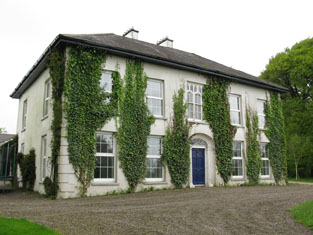
|
| Upper Forest | Occupied by John Hassett at the time of Griffith's Valuation and held from Thomas Gollock. The house was valued at £20+. The representatives of John Hassett still lived at Forest in the 1870s. | |
| Upper Thornhill House | Burke’s Landed Gentry of Ireland (1958) records the Nixon family of Thornhill in the 18th century. Thornhill was located on the Parker estate. By the mid-19th century William Nixon was the occupier. The house was valued at £6. The Nixon family continue to live here in the early 20th century. This house is no longer occupied. |

|
| Upton | Reverend Somers Payne held this property in fee at the time of Griffith's Valuation, when it was valued at £45. Lewis names the seat of Reverend Payne as "Upton" in 1837. Noted by Leet as the seat of W.L. Beaufort in 1814. James Welply was resident in the 1870s. In 1942 the Irish Tourist Association survey noted that a sister of the Sheares brothers, executed as United Irishmen, was married into the Payne family and that the brothers were in the habit of visiting Upton. This property is still extant and run as a facility providing nursing care services. |
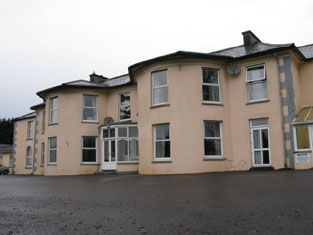
|
| Urbalshinny | William Armstrong was leasing two properties which included a house and large mill complex, from the Hamilton estate at the time of Griffith’s Valuation. One, leased from Andrew Hamilton, was valued at £95, while the second leased from the representatives of John Hamilton, was valued at £37. The extensive ruins of these mill buildings and their associated houses are still visible in the landscape | |
| Uregare House | Owregare House was the residence of Mrs Gubbins in 1837 and of Mrs N. Barron who held the property from William G. Gubbins at the time of Griffith's Valuation. The buildings were valued at £22+. This house was also known as Newlawn. Fitzgerald writes that it belonged to the Creed family before the Gubbins. Occupied by Thomas A. Dicken in 1906. This house is no longer extant. | |
| Urlar or Beckfield | Leased by William Hamilton,MD, from the Gore-Booth estate at the time of Griffith's Valuaiton when it was valued at over £10. McTernan notes that it was previously held by the Munns family and later in the nineteenth century by George Somerville. Labeled as Beckfield on the First Edition Ordnance Survey Map. It is still extant and undergoing restoration. | |
| Urra | Occupied by B. W. Holmes in the mid 19th century, held from John D. and William Kellett and valued at £13+. | |
| Uskane | Carrol Esq was resident at "Iscane" in the 1770s and 1780s. In 1837 R. Hall was the proprietor of Uskane House. In 1840 the Ordnance Survey Name Books note it as "a good dwelling house, the residence of Mr. Kent". It was held by the representatives of Robert Hall in fee at the time of Griffith's Valuation when the house was valued at £8. This house is still in use as a residence. |
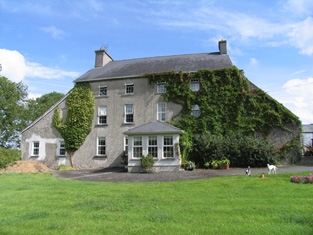
|
| Valentia Slate Quarry | Berwick Blackburne was leasing the slate quarry and associated buildings at Dohilla, Valentia, from the Knight of Kerry at the time of Griffith's Valuation. The buildings were then valued at £26 15s. The quarry was opened by the Knight of Kerry in 1816 and contributed slate to many of the Victorian period's most farmous building projects, including the Houses of Parliament at Westminster. It closed in the twentieth century but was re-opened in 1998 and is still working. | |
| Velvetstown | Seat of the Crofts family for over three centuries, "Velvex-town" was occupied by Thomas Crofts in 1814, by T. Lucas Crofts in 1837 and by Reverend William Crofts in the early 1850s. Reverend William held the house and 708 acres from Penrose Fitzgerald and the buildings were valued at £21. Hajba writes that the original house was replaced by an elaborate Italianate mansion in the late 1870s but when this burnt down in 1895 they moved back into their old home. She also writes that Velvetstown is one of the few North Cork houses still occupied by the family that built it. The Irish Tourist Association survey noted in the 1940s that the walls of the Italianate mansion were still standing though the chimneys had been taken down. |

|
| Venter Fair | The Ordnance Survey Name Books refer to this house in the townland of Clashduff, parish of Ballingarry as "Venture Fair" and note the existence there of coal mines of the same name. At the time of Griffith's Valuation, it was leased by Mrs. Mary O'Sullivan from the Langley estate and valued at almost £10. A house is still extant at the site. | |
| Verdanthill House | In 1840 the Ordnance Survey Name Books record Verdant Hill House as the residence of George Wilson. By the time of Griffith's Valuation it was occupied by George Fitzmaurice, leasing from Rev. David Brownrigg when it was valued at £19. It is still extant. |
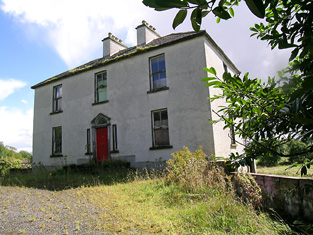
|
| Vermount | Also known as Munine or Moneen, the house was described as 'in ruins' on the Ordnance Survey 6 inch map (1932), following its burning in 1923. Extensive outbuildings are still in use and part of the yard is now a residence. McHale writes that this was, in fact, the original house. The National Inventory of Architectural Heritage suggests that the family occupied this building while Vermont House was being constructed. In 1786, Wilson refers to a house called "Munnine" as a seat of Mr. French. |

|
| Vernon Mount | Built by Atwell Hayes in the 1780s, Vernon Mount was the residence of John Leslie in 1814 and of O. Hayes in 1837. Soon afterwards it was leased to William Lane and he was the occupier at the time of Griffith's Valuation, holding the house valued at £55 from Attiwell Hayes. The Hayes sale rental of 1851 describes this house as "a large handsome building erected by the present owner's father at a cost of £5000". It was leased by the Hayes family to William Lane in 1839. A building still exists at this site. | |
| View Mount | A property named as View Mount on the 25-inch Ordnance Survey Map of the 1890s. It was occupied by Sarah Reynett, leasing from the Grant estate, at the time of Griffith's Valuation, when it was valued at £32. Mrs. Sarah Reynett, with an address at Kingstown, Dublin, owned 89 acres in county Waterford in the 1870s. A house is still extant at the site. | |
| Villa Mantilla Verda | On the outskirts of the town of Carrick on Suir, this house was occupied by Mrs Sophia Manderville in the mid 19th century. She held it from Walter Herbert [nephew of Dorothea Herbert] and the buildings were valued at £16.11 shillings. | |
| Villa Marina (Dunmore East) | Richard Stapleton was leasing a property valued at £22 from Lord Waterford's estate at the time of Griffith's Valuation. He was also occupying a pleasure ground valued at £12. Possibly occupying the site of the property now known as Villa Marina, formerly a hotel. The National Inventory of Architectural Heritage suggests the existing building at this site was built in the 1860s for David Malcolmson, designed by John Skipton Mulvany. |

|
| Villierstown House | In 1851 leased by Rev. Hans Butler from the Villiers Stuart estate when it was valued at £14 5s. Still extant and occupied. |

|
| Violet Hill | Occupied by Jonas Smyth at the time of Griffith's Valuation and held by him from Henry Cornelius. The buildings were valued at £12. This house is still extant and occupied. |
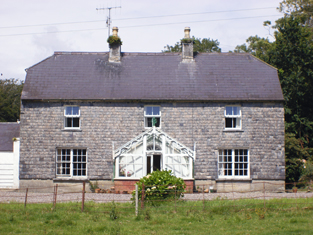
|
| Violet Hill | At the time of Griffith's Valuation Thomas McDonnell was leasing an extensive mill complex and a house at Shannon Oughter, from the Martin estate. The entire property was valued at over £30. | |
| Violet Hill | Home of James Going and his wife Jane Patterson from at least 1837. Occupied by their third son Wyndham Quin Going in the mid 19th century when the buildings were valued at £20. The house remained the property of the Going family until it was sold in 1924, now a ruin. | |
| Wallscourt | Wallscourt House is described as "in ruins" on the 1st edition 6" OS map. Very little now remains of it except for one chimney. |

|
| Wallstown Castle | The castle was originally in the hands of the Wall family. In the late 17th century it passed into the possession of the Ruddocks and then through marriage to the Creaghs and Stawells. In 1836 it was leased to Thomas Baily and was held by Charles Bailey from Thomas Bailey at the time of Griffith's Valuation, valued at £7.18 shillings. The property was purchased by John McCormick of Dublin in 1858. The battlements were added to the building circa 1860. See www.corkpastandpresent.ie. In the 1940s the Irish Tourist Association reported that it had been purchased in the 1920s by a Mr Crowley who "lives in a grand mansion near the ruin of the old castle", |
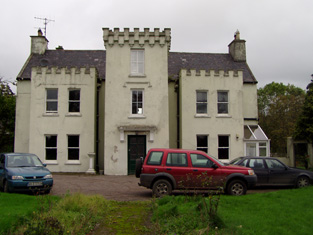
|
| Walsh Park | The home of the Walsh family in the 18th and first half of the 19th centuries. Taylor and Skinner record Walsh Esq as resident at Derrylaghan [Walshpark]. The Ordnance Survey Name Books refer to the demesne as having plantations and ornamental grounds and to the house as "a good dwelling house, the residence of Jonathan Walsh" in 1840. . In the mid 19th century it was occupied by the representatives of Jonathan Walsh who held the property in fee. The house was valued at £33. This house was demolished by the early 20th century. | |
| Walshestown | This townland was leased to Robert Conron early in the 18th century by Sir Philip Perceval. By 1814 the house was occupied by John Wrixon. Hajba writes that he was the son of Edward and Anne Wrixon. In the early 1850s Nicholas Wrixon was resident holding the house valued at £8 from John Wrixon. In the 1830s the house is recorded as being occupied by George Crofts and his wife Eliza Purcell of nearby Burton Park. George Crofts was a brother of the Reverend F.W. Crofts. This house is no longer occupied. |

|
| Walterstown | A house named after Walter third son of William Butler of Bunnahow (died 1823). Held by Walter's son Nicholas Butler from his father at the time of Griffith's Valuation when the house was valued at £5. This house passed to Nicholas's son Walter Blake Butler in 1892, who had assumed the additional surname of Creagh. The house was sold to the Land Commission in the late 1950s and was demolished. | |
| Walton Court | Dame Anne Roberts was leasing Walton Court to Timothy Daly at the time of Griffith's Valuation, when it was valued at £15. Lewis refers to is as the seat of T. Walton Roberts in 1837. The Roberts family were bankers in Cork city who acquired the property in the eighteenth century. Prior to that it had been in the hands of the Walton family who had been granted Roche lands in the area. In the later nineteenth century it passed to the Knolles family of nearby Oatlands. Walton Court is still extant and occupied and offers holiday accommodation. See www.waltoncourt.com |

|
| Ward House | At the time of Griffith's Valuation this property was held in fee by James Ellis when the house was valued at £10. It is labelled Ward House on both the 1st and 25-inch edition Ordnance Survey maps. The original house is no longer extant. | |
| Wardtown | In 1837 Lewis recorded "Wardton" as a residence of J. ffolliott. At the time of Griffiths Valuation it was leased from the ffolliott estate by Henry Likely and valued at £20. The National Inventory of Architectural Heriage suggests the house was built c.1739-1740 but has been out of use since 1916 and is now a ruin. |

|
| Warren's Court | Kilbarry was bought by the Warrens in the late 17th century. The house Warren's Court was built in the 18th century and was the main seat of this family in the 18th and 19th centuries. In 1750 Smith refers to Kilbarry the "handsome house" of Robert Warren. Wilson notes it as "the fine seat of Thomas Warren" in 1786. In 1894 Slater refers to it as the seat of Sir A. Warren. In 1906 it was valued at £66 and occupied by Sir Augustus Riversdale Warren.. It was burnt in June 1921 during the War of Independence when it was the residence of Sir Augustus D. Warren. The original house is no longer extant. In the 1940s the Irish Tourist Association Survey reported that a modern two-storey house had been constructed nearby. | |
| Warren/Drum | Viscount Lorton was the lessor of two properties in the townland of Warren or Drum, parish of Boyle, at the time of Griffith's Valuation. One, valued at £14, was leased to Brian Judge, while the second, valued at £12, was leased to Alexander Arnold. | |
| Warrensbrook | Richard Donovan was leasing this property to Daniel Donovan at the time of Griffith's Valuation, when it was valued at £14. There is still a house at this site, part of a large farm complex. |
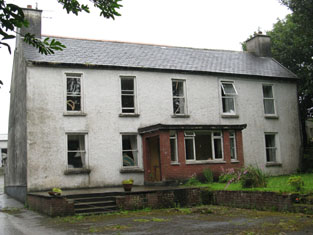
|
| Warrensgrove | This house was the home of John Borlase Warren who succeeded his brother Sir Augustus Warren as 4th Baronet. He is recorded as being resident in 1837 and at the time of Griffith's Valuation when he held the property from Sir A. Warren. The buildings were valued at £48. In the 1940s the Irish Tourist Association Survey noted that Warrensgrove had been burnt in 1921. The original house is now a ruin but buildings adjacent have been redeveloped as a country house. In 2014, the property, including the ruin, was offered for sale. |

|
| Water Foot (Lurg) | Hugh William Barton held this property in fee at the time of Griffiths Valuation when it was valued at £50. | |
| Waterdale | This was originally a Staunton property which passed by marriage to the Lamberts. In 1786 Wilson refers to it as the seat of Mr. Staunton. The OS Name Books record it as the property of James Blake in the 1830s. Sold to Lord Clanmorris briefly in the 1850s and repurchased by James Staunton Lambert, Waterdale was leased to John Wilson Lynch 1857-1870 and to James Delahunt 1870-1883. It was taken over by the Land Commission in 1903 and demolished. |

|
| Waterfall | Occupied by Austin Esq in the 1770s and 1780s and by T. Austin in 1837. Leased by Edward Austen who held from the representatives of Viscount Midleton in the mid 19th century. The buildings were valued at £14. The house shown at this location on the 1st edition Ordnance Survey map has disappeared by the time of the publication of the 25-inch edition in the 1890s. Buildings do still exist at the site. | |
| Waterloo | Reputedly built circa 1815 for Henry Longfield, fifth son of John Longfield of Longueville, following his marriage to Mary Powell, heiress of Sea Court, county Cork. At the time of Griffith's Valuation it was held by Henry Longfield in fee and valued at £37. Henry's son John Powell Longfield sold Waterloo to his first cousin Richard Longfield of Longueville who left it to his third son Augustus Henry Longfield. Augustus H. Longfield extended the building. The house was sold to Mr E. W. Hope-Johnstone in 1946. It is still a fine residence. |

|
| Waterloo House | In 1786, Wilson refers to a house in this area as Fair-Hill, the seat of Mr. French. Waterloo was the home of the Concannons from the 1820s to the early 20th century. It was held in fee by Edmund Concannon at the time of Griffith's Valuation, when it was valued at over £20. It is still extant and occupied. |

|
| Waterloo Lodge | Located on the shore of Lough Derg the Reverend R.P. Vaughan was resident at Waterloo in 1837. The Ordnance Survey Name Books refer to it as his residence, "a neat cottage". Edward Biggs is recorded as the occupier in the mid 19th century, holding the property valued at £10 from Dr Malony. A building is still located at this site. | |
| Waterpark | A Bindon family home at the beginning of the 19th century. In the mid 19th century the house was located on the estate of Sir Hugh Dillon Massy and was occupied by John Quinn who also held a corn mill. The house was valued at £24. This house was later a home of the Phelps family who vacated it in 1914. It is no longer extant. The Irish Tourist Association surveyor wrote in 1942 that it was being demolished by its owner Mr Latham. | |
| Waterpark | This was a Lavallin home in the 18th century. Robert Atkins leased this property from the representatives of Thomas Dorman/Dormand at the time of Griffith's Valuation. It was valued at £48. | |
| Waterpark | Originally a Pyne residence which later passed through marriage to the Cavendishes. In 1786 Wlson refers to "the ruins of Water Park, the seat of the late Lord Chief Justice Pine". Hajba writes that other occupants were the Watkins and Drew families. There was no house of more than £2.10 shillings valuation in this townland, held by George Walker, at the time of Griffith's Valuation. | |
| Waterpark House | A house on the Monteagle estate, the residence of Catherine Nolan in the early 1850s, when it was valued at £10. It is labelled as Waterpark House on the 25-inch Ordnance Survey map of the 1890s. A house is still extant at the site. | |
| Waterview | Frederick Blennerhassett was leasing this property to Patrick Trant at the time of Griffith's Valuation, when it was valued at £6 15s. Both Lewis, in 1837, and Leet, in 1814, refer to it as the residence of P.Trant. Bary quotes O'Donovan that Waterview was built by Captain Trant in the early years of the nineteenth century. It remained a residence of the Trant family until the middle of the century when it seems to have been bought by the O'Connells. It was sold to the Moriarty family in 1927 and is still standing and inhabited. | |
| Waterview (Passage West) | Leased by Richard Neville Parker from Lord deVesci's estate at the time of Griffith's Valuation when it was valued at £76. Waterview was offered for sale in the Landed Estates Court by Parker's widow, Hannah Maria, in September 1874. Waterview is still in use as a residence. | |
| Waterville | Caleb Chute was leasing a property valued at £18 to James Butler at the time of Griffith's Valuation. Both Lewis, in 1837, and Leet in 1814, noted Waterville as the residence of James Butler .The Ordnance Survey Name Books described it as " two stories high and in good repair" in 1840. Bary indicates that the house was built by the Butler family in the late eighteenth century and they resided there until 1965. It is now a luxury guesthouse with a golf links nearby. |

|
| Waterville/Cloonkeen | The residence of John Connis in 1814, of - Cunneys in 1837 and of Jane D. Coneys in the 1850s when it was valued at £10. . It is labelled on the 1st and 25-inch edition Ordnance Survey Maps as Cloonkeen. The property is now a ruin. | |
| Wellfort | Marked on the first edition Ordnance Survey map as Wilfort House, this property was held in fee by Richard D'Arcy at the time of Griffith's Valuation when it was valued at £18. It is named as Wellfort House on the 25-inch Ordnance Survey map of the 1890s. Wellfort is no longer extant. |
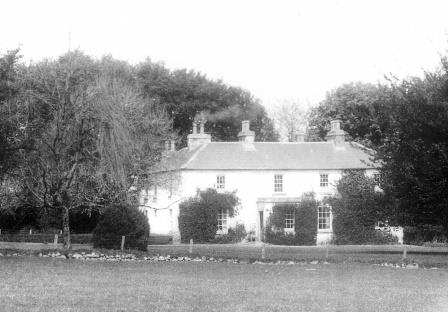
|
| Wellington | A Morony residence which later passed to the Ellis family, to whom the Moronys were related. In the latter part of the 20th century it was the home of Dr Patrick Hillery, President of Ireland. |
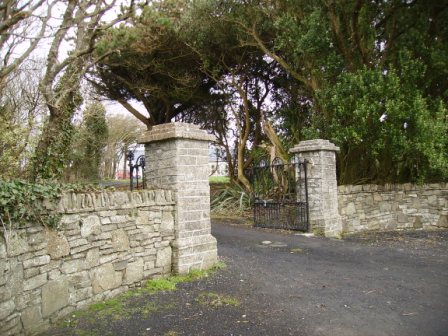
|
| Wellington | In 1840 the Ordnance Survey Name Books refer to Wellington as "the commodious dwelling house of Edwin Sadlier". By the time of Griffith's Valuation, the house was occupied by Daniel Falkiner, valued at £20 and held from the representatives of Colonel Brereton. This house is marked on the first edition Ordnance Survey map. It was replaced by another house also known as Wellington, closer to the mill, in the early 1870s, and this latter house is still extant. |

|
| Wellpark | In 1786 Wilson refers to Wellpark as the seat of Mr. French. It became a residence of the MacNamara family early in the 19th century. In 1855 occupied by Martin Morris and by George Morris in the 1870s. The home of the Moffett family in the early 20th century. Frances Moffett wrote the book ''I also am of Ireland'' published by the British Broadcasting Corporation, London, 1985. The house, which was in a derelict condition, was demolished in 2007. | |
| West Cove | Edward J. Hartopp was leasing this property at Coad, valued at £14 15s, to Eugene O’Sullivan at the time of Griffith’s Valuation. Lewis mentions Castle Cove as the residence of Mr. O'Sullivan in 1837 but he may have meant this house. In 1814, Leet noted Cooe as the seat of John Sesggerson and Bary states that, prior to the O'Sullivan occupation, West Cove was the seat of the Seggerson family. It is still extant and sometimes let as holiday accommodation. |
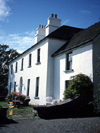
|
| West View | At the time of Griffith's Valuation, West View was being leased from Lords Longford and deVesci by Francis Allen, when it was valued at £21. Lewis refers to West View as the seat of Maj. E. Allen in 1837. It is still extant and occupied and now known as Seamark. |
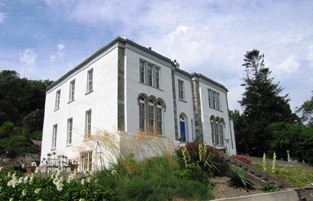
|
| West View (Glandore) | Leased by Francis Allen from Lords Longford and deVesci at the time of Griffith's Valuation, when it was valued at £21. The National Inventory of Architectural Heritage contends that Stone Hall is the earliest house of this group of three and that they were constructed by members of the Allen family. This house is labelled as West View on both the First and 25-inch edition Ordnance Survey maps. It is still extant and occupied. |
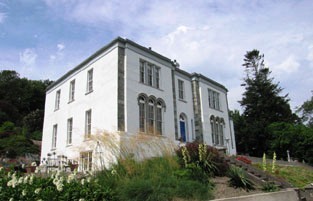
|
| West Villa or West Lodge | Edward Mulchinock was leasing this property from Sir George Colthurst at the time of Griffith's Valuation when it was valued at £15. Bary writes that this is the house associated with William Mulchinock, the writer of the famous song "The Rose of Tralee". It is still extant and occupied. | |
| Westbrook (Inishowen) | James Todd was leasing this property to a Captain Considine at the time of Griffiths Valuation, when it was valued at £10. A house named “Westport” is given as his own address in Hussey de Burgh’s list of landowners in 1878. Westbrook House is still extant. |
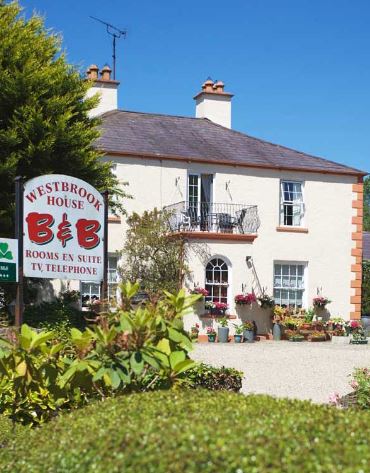
|
| Westcliff Lodge | Built post 1838, this house was occupied by Henry Vereker at the time of Griffith's Valuation, valued at £11.10 shillings. Henry Vereker of Dublin married Anne Morony of Limerick in 1823. | |
| Westfield | At the time of Griffith's Valuation, Margaret Long was leasing this property to Rev. John Coppinger when it was valued at £13 15s. The house is still extant and occupied. |
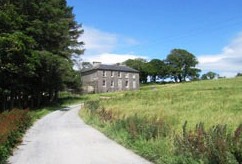
|
| Westgrove | Arthur Riall was residing at Westgrove in 1837 and in 1850 when the house was valued at £23+ and held from Robert Maunsell. This house is still in use as a residence. |
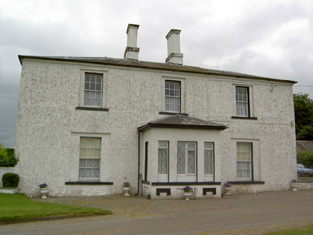
|
| Weston | John D. Mahon was leasing this property, valued at £35, from Sir William Mahon, at the time of Griffith's Valuation. It is described as unoccupied at the time of the first Ordnance Survey. The National Inventory of Architectural Heritage indicates that the original Weston house is now demolished. A smaller house, known as Weston Lodge, was also located in the demesne (M779403). It is no longer extant. |

|
| Westpark | Occupied by Thomas J. Morony in 1814. In the mid 20th century the summer home of the McClancy family. | |
| Westport House | Built on the site of the O'Malley castle of Cathair na Mart by Colonel John Browne, expanded by his grandson to the design of Richard Cassels, the house has remained in the possession of the Browne family for over three centuries. They still live there and the house and its grounds function as a major tourist attraction. |

|
| Westwood | Reverend P. Fitzgerald wrote in 1826 that Lancelot Kiggell "lately built a beautiful cottage adjoining a fine old wood near Glin". This house was occupied by Lieutenant Hyde Royal Navy in 1837 and by John F.E. Fitzgerald, heir to the Knight of Glin in the early 1850s. The house shown on the 25-inch map of the 1890s is much reduced in size and it is no longer extant. | |
| Westwood/Benduff Cottage | Catherine French held this property from William Morris at the time of Griffith's Valuation. On the 25-inch Ordnance Survey map of the 1890s it is labelled Westwood. In 1906 it was owned by Michael French and valued at £13 10s. There is still an extant house at the site. | |
| White Castle | George Cary held this property in fee at the time of Griffiths Valuation in the 1850s when it was valued at £24. Lewis had noted it as the seat of L.Carey in 1837. The National Inventory of Architectural Heritage suggests it was built in the last decade of the 18th century but remodelled in the 19th. It is still extant and occupied. |
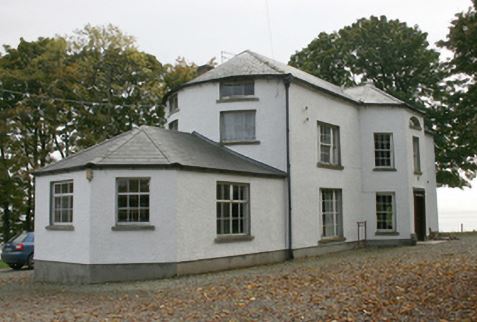
|
| White Hall | The residence of Mr White in 1778 when it was known as Quin's pool. In 1786 Wilson refers to it as White-Hall, the seat of Mr. White. The home of Captain Richard Kane in 1837. At the time of Griffith's Valuation occupied by John C. Delmege who held it from the Captain's son, Thomas Kane. It is still extant. |
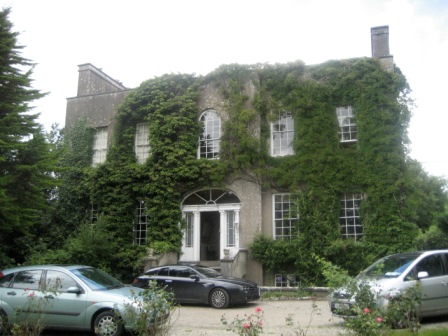
|
| White Hill (Inver) | In 1837 Lewis referred to White Hill in the civil parish of Inver, County Donegal, as the residence of Reverend Montgomery. The house is labelled Inver on the First edition Ordnance Survey map. At the time of Griffiths Valuation, in the 1860s, this house was occupied and held in freehold by Reverend Henry Carré. It was valued at £18. The National Inventory of Architectural Heritage suggests the present house was built c.1810 but may have incorporated elements of a seventeenth century house. This house was known as Inver Rectory for many years and is still extant. |

|
| Whitechurch | In 1851 this property was held in fee by Florence McCarthy when it was valued at £32. Local sources suggest it was once part of the Earl of Huntingdon's estate. The ITA survey noted that it had previously been the property of Dr. Forsythe, and, from the 1920s onwards, owned by the McGrath family. It is still extant and used as self-catering accommodation. |
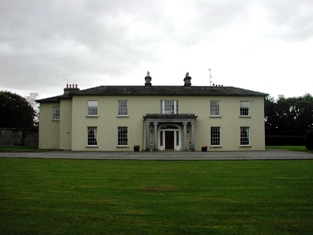
|
| Whitefort House | The Ordnance Survey Name Books refer to Whitefort House as a gentleman's residence in 1840. At the time of Griffith's Valuation, this property was leased by John Jones from the Wall estate when it was valued at almost £10. It is still extant. | |
| Whitegate House | In 1786 Wilson refers to Whitegate as the seat of Thomas Travers. It was the home of Mrs Gertrude Fitzgerald (nee Blakeney Lyon), wife of Robert Uniacke Fitzgerald, in 1837 and at the time of Griffith's Valutaion when it was valued at £25 and held from Robert U. P. Fitzgerald. The property passed in the mid 1850s to the niece of R.U. Fitzgerald, Anne Penrose, who was married to Thomas Stewart. Still extant and occupied. |
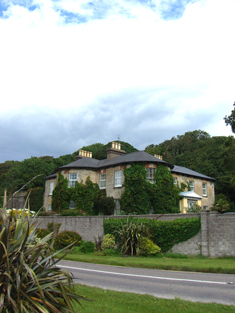
|
| Whitehall | Edward Townsend held this property in fee at the time of Griffith's Valuation, when it was valued at £22. Lewis noted it as the residence of S. Townsend in 1837. In 1906 it was owned by the representatives of Samuel R. Townsend and valued at £21. Bence-Jones indicates that it later became the property of the Alleyne family. The Irish Tourist Association reported in the early 1940s that it was still occupied at that time. |

|
| Whitehill (Raphoe North) | James Browne was leasing this property from the Abercorn estate at the time of Griffiths Valuation in the 1850s, when it was valued at £11. A house is still extant at the site. | |
| Whitesfort | At the time of Griffith's Valuation John Norris was leasing this property from the Stradbroke estate when it was valued at £11. Referring to the 1770s Sadleir notes "John White, of Whitefort" who was married to a daughter of Ambrose Lane. It is not named on the 1st edition Ordnance survey map though buildings and a walled garden are visible. The ruins of some buildings remain. | |
| Whitestown | Described as a huntsman's house in Griffith's Valuation in 1850, Whitestown was then valued at £14. In 1906 it was still part of Lord Waterford's estate and valued at £11. It is no longer extant. | |
| Whitestown | In 1850,Lord Waterford held a property described as a "huntsman's house" in fee at Whitestown. It was valued at £14. Substantial kennels are shown nearby on the 25-inch Ordnance Survey map of the 1890s and this building is still extant. | |
| Whitestown House | David Shanahan was leasing Whitestown House from the Marquis of Waterford's estate in 1850 when it was valued at 16 10s. The original house is now derelict. This may be the property to which Wilson refers in 1786 when he notes it as seat of Mr. Ducket. | |
| Whitestown House (Kilmacthomas) | In 1851, Stephen Moore was leasing this property from the Marquis of Waterford, when it was valued at almost £10. It is still extant and occupied. |
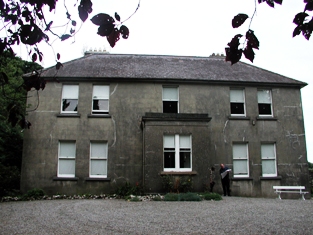
|
| Whiteville | Leet records Mr Stephen Ryan as the resident of White-ville, Moneygall, in 1814. The Ordnance Survey Name Books refer to Whiteville as the residence of Robert White. Benjamin White was the occupier at the time of Griffith's Valuation. He held the property in fee and the buildings were valued at £13+. This house marked on the first edition Ordnance Survey map was replaced by a later house known as Knockanroger House and located slightly to the north of the original structure. A house is still extant at the site. | |
| Whitfield Court | In 1850 William Christmas held Whitfield in fee when it was valued at £49. The National Inventory of Architectural Heritage indicates the house was built by him between 1820-1849, replacing an earlier house. Local sources indicate that this earlier house was in the townland of Whitfield and the name was transferred to the existing house when it was built in the adjacent townland of Dooneen. Leet records the earlier property as the seat of Thomas Christmas in 1814. Smith, writing in 1774, mentions the house as "an elegent seat belonging to Thomas Christmas, formerly a Dobbyn castle". In 1786 Wilson refers to Whitfield as the seat of William Christmas. The nineteenth century house is still extant but no longer occupied. |
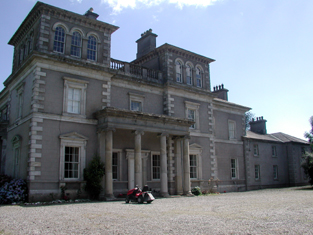
|
| Wilford | Wilford was the residence Butler Esq in the 1770s and 1780s and of Mr Richard Blackmore in 1814. In the early 1850s it was occupied by John Blackmore, who held the property valued at £11+ from William P. Barker with 128 acres. The house is labelled Wilford House on the 1st edition Ordnance Survey map but as Shangarry House on the 25-inch edition of the 1890s. It is now a ruin. | |
| Wilford | Occupied by W. Lindsey in 1837. A roofless ruin now occupies the site. |

|
| Wilford Lodge | This house may have been named after Lieutenant Colonel Richard R. Wilford who held a lease of the property from the Arbuthnot family in 1786. It was also leased to Reverend George Graydon, Sir Samuel O'Malley and Thomas G. FitzGerald and A. T. Oram, as detailed in the Westport Papers. Charles Pridham was the occupier at the time of Griffith's Valuation. Buildings are still extant at the site. For further information and photographs about the Oram occupation of Wilford see http://familyhistory.oram.ca/burrishoole/ |
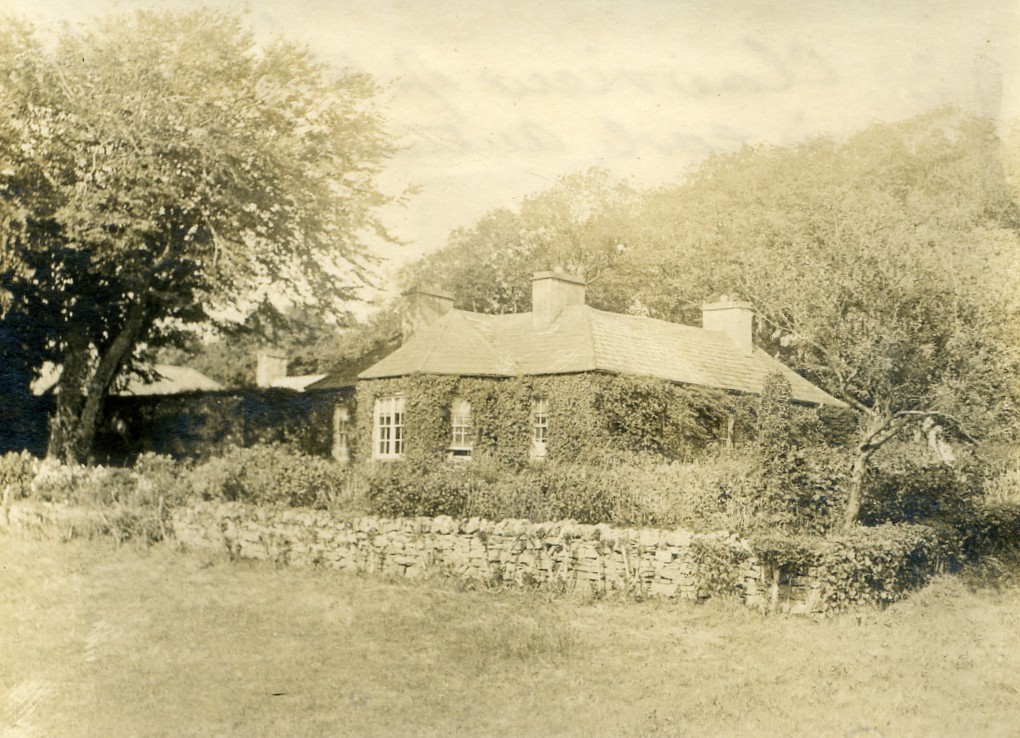
|
| Will Ville | The National Inventory of Architectural Heritage dates this building early 18th century. It was located on the estate of Lord Rossmore and is named on the 1st edition 6 inch Ordnance Survey map (1836). Valued at £10 and occupied by Robert Wilson at the time of Griffith’s Valuation. Still occupied by Robert Wilson, farmer, in the early 20th century. This house has been unoccupied for some time. |

|
| Willbrook | This house was originally an Adams home, the Adams and Brews intermarried. In 1837 W.A. Brew lived here. At the time of Griffith's Valuation the buildings were valued at £5 and the house was occupied by Austin Moran and held from Lord George Quin. In the early 20th century it was the home of the Corbett family. Weir writes that the house was burnt down during the "Troubles". The present residence which was bought in the mid 20th century by Louis de Brocquy was constructed out of the stables. | |
| Williamstadt House | Previously the residence of the Brady family, Williamstadt passed to Dr.Francis Sampson through marriage in 1833. At the time of Griffith's Valuation it was valued at £10 and Sampson was leasing it from James Egan. Up to 1898 this house would have been in county Galway. The house is still extant and occupied. |
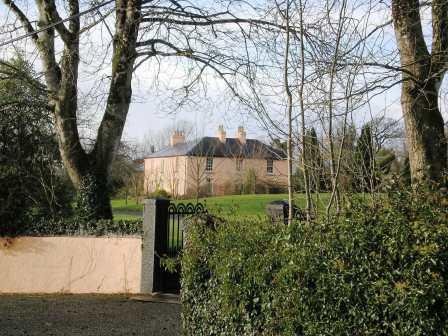
|
| Williamstown Castle | Lewis refers to Williamstown Castle having been restored by the Messrs Pain, architects. In the early 1850s John Croker is recorded as the occupier, holding the property in fee. The buildings were valued at £33. It is now a ruin. | |
| Williamstown Hotel | Joshua Seward was leasing a building valued at £7 to the City of Dublin Steam Packet company at Drummaan East, barony of Leitrim, county Galway, at the time of Griffith's Valuation. This building functioned as the Williamstown Hotel. The original hotel building is no longer extant but the stable block remains and is used as a house. Following 1898 boundary revisions this property is now located in county Clare. |
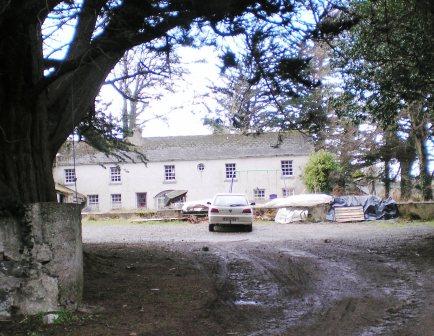
|
| Williamstown House | David O'Neill Power was the lessor of several properties in the townland of Williamstown in 1848. This property, though valued at only £4 10s, appears as Williamstown House on the 6-inch Ordnance Survey map. However, it has disappeared by the publication of the 25-inch Ordnance Survey map of the 1890s. In 1848 it was leased to John W.Pons. Writing in 1774, Smith mentions Williamstown House as the seat of Mr. Fitzgerald. | |
| Williamstown Power | At the time of Griffith's Valuation, Edmund Power (senior) was leasing a property valued at £10 15s from the O'Neill Power estate. At the same time Edmund Power (junior) was leasing a property valued at 11 14s. | |
| Willmount | Occupied in 1814 by Robert Lane and by Hampden Lane in the early 1850s, when the house was valued at £17 and held from William P. Barker. This house is still an occupied residence. |
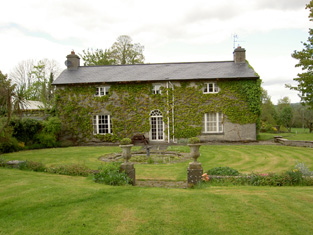
|
| Willmount | Willmount House leased by Thomas Mahon from William Smith at the time of Griffith's Valuation when it was valued at £10. In the 1870s Henry Morgan, who owned over 200 acres in county Galway, was residing at Willmount. In 1906 it was the property of John McCoy. The original house appears not to have survived though there is evidence of a farm yard and walled garden close to Willmount Graveyard. Extensive modern farm buildings exist on the site. | |
| Willmount or Gortnacloghy | In 1856 Matthew McDonagh was leasing a property valued at £19 in the townland of Gortnacloghy, parish of Lickmolassy, barony of Longford, from the Clanricarde estate. This house was also known as Wilmount or Wellmount. |

|
| Willow Brook | Occupied by Richard Orpin in the early 1850s and held from John Herbert Orpin, the buildings were valued at £10.10 shillings. This house is still extant and occupied. |

|

